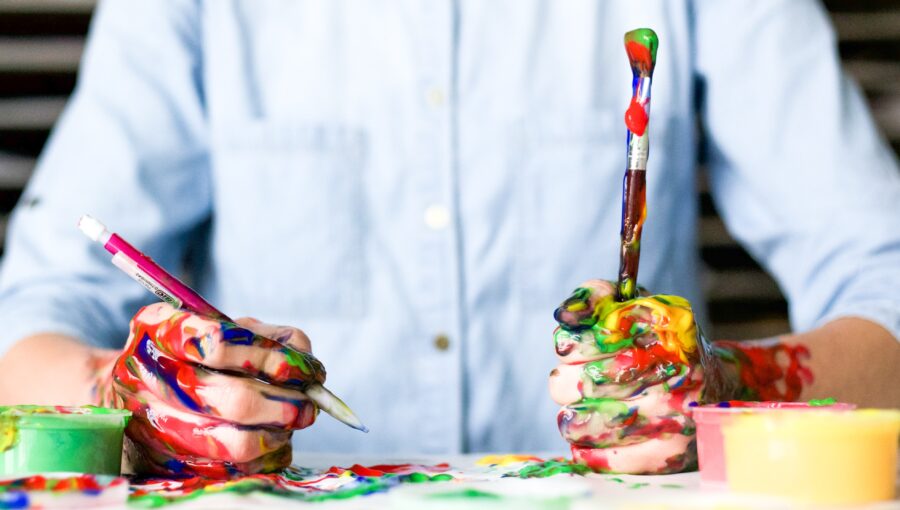Welcome to what will (hopefully) be a regular collection of articles and resources related to creative industries business that I’ve been enjoying. This month: innovative responses to the pandemic, new opportunities for artists, NFT advances, clients with climate issues and public art problems. Enjoy!
- Kelly Burke at the Guardian reports on a campaign to fill the on hold playlists of big corporates and government departments with Australian music. Sounds like a simple and sensible idea which might put some dollars in local muso’s pockets. They’ll have to be careful with some of the choices, though. Anyone fancy hearing Highway to Hell while on hold with the ATO?
- It’s been a rollercoaster ride for the Australian screen industry over the last couple of years, with COVID disruption giving way to an influx of runaway productions, and now a levelling out as global production restarts. Add to this, the trouble in getting the increase to the producers’ offset for non-feature length content legislated before the Senate rises for the year, as Jackie Keast details at if.com.au. Within that article, Screen Australia’s CEO Graham Mason makes the point that the offset’s now such an integral part a project’s budget that it often leaves nothing left over for growing screen businesses. It will be good to see how any potential replacement for Screen Australia’s Enterprise program deals with that.
- What changes are you making to your office space post COVID? At Architecture and Design, PwC’s Tony Massaro is talking about how commercial buildings are changing as a result of the pandemic. Think more Zoom rooms, better ventilation, more socially distant work spaces and better tech to enable remote working. Smaller spaces and reduced rental costs too, I expect. I’m seeing plenty of clients opting to downsize without many downsides, and I don’t see many rushing back to big office space anytime soon.
- On the Gold Coast, the Home of the Arts (HOTA) has taken up the challenge of a living wage for artists. Their ArtKeeper program has given 4 local artists part time positions within the organisation to develop work and to contribute to operations more broadly, as Jo Pickup at Artshub reports. The gap JobKeeper left between the admin/management staff of arts organisations and freelance artists and creatives was well documented, so this is an interesting experiment in bringing artists closer to the core business of funded organisations. Who will be the next to test this model?
- At the Generate blog, Ben Fletcher and I put our heads together to come up with a list of 10 things successful creative agencies do well. In fact, there’s 11 tips, but I assume no-one minds a bonus and maybe some will be amused by our inability to count. It’s a taster of our e-book on running profitable creative agencies, which you can grab for free here.
- In the AFR, Campbell Smith points out a few difficulties advertising agencies face when electing not to work with companies which promote the use of fossil fuels. He says it’s not easy to pick the “white hats” from the “black hats” in this space, and in doing so, advertising risks losing its influence at boardroom level and the opportunity to help consumers understand what businesses are doing to decarbonise the economy. Hmm… can agencies have their climate credentials cake and eat it too? (Note that article is behind a paywall)
- The popularity of NFTs in the visual arts world has attracted a lot of attention lately, but they’re also gaining traction in the worlds of e-sports and gaming. In the SMH, Dominic Powell outlines how there’s big money being spent on the digital equivalents of horse racing and collectable card trading, and how in gaming, the trade in digital skins and skills packs is being fuelled by NFTs. Who knew? Probably your kids.
- Public art is often contentious, but someone disliked this statue of a life sized banana so much they tried to decapitate it. As Michael Sun at the Guardian reports, the troublesome statue was commissioned by City of Yarra with road safety funding from the Transport Accident Commission. And although TAC’s not a suspect in this act of fruity vandalism, it doesn’t sound like they were overjoyed with the project either. The article quotes TAC’s head of road safety as saying, “Were we aware there was going to be a piece of banana art as part of the project? We weren’t.” Delicious.
- Finally, it’s always gratifying to see a project we’ve worked on get off the ground. Brand X is calling for expressions of interest from creatives and organisation’s wishing to use City of Sydney’s new Bathurst St Creative Hub, with its 5 storeys of creative spaces for film, music, visual arts, performing arts and more. Sharpe Advisory worked on the business modelling for this facility. Can’t wait to see the work produced by having artists working in heart of Sydney’s CBD.
Found a great article on the business of creativity which is worth sharing? Drop us a line via our contact form here.
